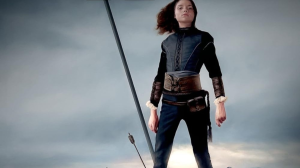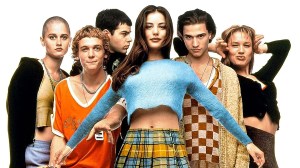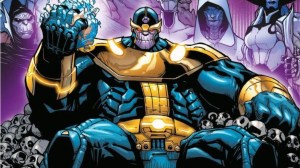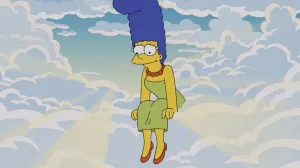Halloween II (1981) is very much the Jaws 2 of the Michael Myers saga. It’s not as solid as the first film, but it never really had a chance of being on the same sky-high level. When a bar is set as high as it can go, the goal for follow-ups is to stand on their tiptoes and reach as far as they can towards it. Halloween II reaches pretty far, ultimately serving as the franchise’s definitive companion piece to John Carpenter’s masterpiece. Some might point towards Halloween (2018) as the number one direct continuation of Carpenter’s tale, but for my money this was the best way it could have been done, even if it wasn’t properly appreciated at the time. Or, really, even now.
Videos by ComicBook.com
Not to mention, there’s a blink and you’ll miss it cameo from Dana Carvey in the scene where Annie’s body is removed. That’s more of a fun fact than a reason why Halloween II is such an underrated slasher minor classic, but it’s a fun thing to notice, nonetheless. As for the actual factors that make Halloween II so fantastic, let’s go through them now.
A Thorough Replication of Carpenter’s Style

One of the best parts of Carpenter’s Halloween was the way Michael Myers would just stand behind a character as they were going about their business. It makes the audience feel as unsafe as Myers’ stalked prey. This was most notably seen when he’s peering in on Annie, as she spills hot popcorn butter on her clothing and changes. We see her from his point of view, but we also see him as she’s in the foreground of the shot.
Then, of course, there’s the scene where Laurie is sitting in the classroom and gets distracted by Michael, who is standing behind his stolen vehicle staring at her from across the street. She looks back down at her desk, looks up again, and he’s still there. However, the next time she looks up, he’s gone.
Halloween II continues the former example more than it does the latter. The latter classroom example wouldn’t work as well the second go-round, because if someone is looking straight at Michael during the events of the sequel, they’re going to know who he is, as the news about the murders has been all over the radio.
The former example however, still works. And much to its credit, Halloween II does just as great a job with the whole “Look, he’s right there in the background” technique. The best example is towards the very beginning of the film. Michael has evaded police and continues to creep around the once-peaceful suburban setting, at which point he goes into the home of the elderly Elrod couple. The news about the evening’s murder is playing on the television, which brings Mrs. Elrod out of the kitchen. Then, with the kitchen lights on, we see Michael standing in the kitchen, at which point he picks up a knife. When Mrs. Elrod goes back to reach for the knife, she instead finds only a small pool of blood, which elicits an understandable scream.
This scene works very well for several reasons. For one, there’s something viscerally engrossing about seeing Michael continue to slink around on this particular night, going from home to home as the various residents learn about the killings that have occurred just down the street. Then there’s the fact Michael stands in the middle of a brightly lit kitchen. It continues to shine a light (literally in this case) on Michael’s seeming lack of concern with being caught. On one hand this is because he knows he could take out anyone who approaches him, but it also conveys the notion that Michael is essentially a void. He has a one-track mind and that one track is distinctly inhuman.
On top of Carpenter’s Michael in the background technique, which continues to do a wonderful job building tension, there’s also the fact that Halloween II had a fair amount of direct involvement on the part of Carpenter himself. He didn’t direct it (that would be Rick Rosenthal, who eventually directed the nadir of the series, Halloween: Resurrection), but he did once again co-write the script with his longtime collaborator Debra Hill.
Carpenter also delivered a charmingly altered variation of his original score, this time played on a synthesizer organ as opposed to the piano tune of his ’78 film. This time, Carpenter composed the theme alongside Alan Howarth, with whom he worked on the same year’s Escape from New York (they would collaborate six more times after this, as well).
Carpenter wasn’t the only individual who made Halloween a perfect film, though. When it comes to its haunting yet rather simple Fall-coated visual aura, Dean Cundey made for the perfect cinematographer. And who served as cinematographer on Halloween II? Dean Cundey.
Cundey’s contribution is particularly noticeable in one scene. Like in the original Halloween, there is a hair-raising shot of Michael’s face materializing in a dark background as he’s revealed to be standing just behind a character. In the original film it was behind Laurie, just after she has discovered her friends murdered. In Halloween II, he appears behind Nurse Marshall just after she has discovered Dr. Mixter with a needle in his eye. Is the technique as jolting the second time? Not quite, but it does remain effective and endearing.
A Pair of Overarching Narrative Choices That Really Work

Plenty of Halloween fans will point to the revelation that Laurie is Michael’s sister as a notable weak point in the franchise’s lore, hence it being retconned in David Gordon Green’s 2018 movie. I don’t particularly hate it, and it’s a somewhat iconic twist in its own right, but it was undoubtedly unnecessary.
In the ’78 movie, the first time Michael sees Laurie is when she approaches the Myers house, which her father is going to try to sell. He sees her through the screen door and that’s it. That was all he needed to select her as his target now that he’s out of the hospital. There’s something distinctly unsettling about that wrong place wrong time targeting that makes the original film so powerful.
However, what most fans don’t debate about when it comes to Halloween II is a pair of its overarching narrative choices. For one, while the Laurie is Michael’s sister twist is only a semi-iconic piece of horror film history (given its controversial nature), the choice to have Michael stalk Laurie throughout a hospital is flat-out iconic. It’s so iconic, in fact, that 2025’s The Strangers – Chapter 2 full-on copies it.
The other choice has already been mentioned, which is Halloween II‘s direct continuation of Halloween‘s story. The first film cuts out with Dr. Loomis discovering Michael has survived his six shots to the chest and walked off. That is where we pick up with Halloween II, which is really the definitive reason why this film, not Halloween (2018), is the number one choice to pop in the Blu-ray player as soon as the credits have finished rolling on Carpenter’s classic.
Kills Variety and an Actually Effective Jump Scare

When Halloween II first debuted in 1981, many of the critics (including Roger Ebert) who found great merit in Carpenter’s film felt that Rosenthal’s sequel had immediately made the Halloween franchise just another kill-focused IP just like Friday the 13th. But as they should with Sean S. Cunningham’s original Friday the 13th, many reviewers have come around and acknowledged that, yes, Halloween II is better than the average slasher film. The reason for this is simple: It strives to build tension and succeeds in doing so.
But, at the same time, they weren’t entirely wrong. Halloween II does have twice as many kills as Halloween. But, come on, they kind of had to with a horror movie sequel. And to Halloween II‘s credit, the kills are a little more diverse here. The original film had a stabbing, an off-screen stabbing, a very hard to see throat slit, a stabbing, and a strangulation.
Here, we get a few of the things we saw in the original film, but we also get drowning by hot tub, the aforementioned needle to the eye, a needle to the temple with air which is then injected into the skull, and an unprofessional phlebotomy. Almost all of them stand apart and make great use of the hospital setting.
Then there’s one scene before we reach that hospital setting. Now, for the most part, jump scares are the cheapest gimmick in the horror film business. But there are two that get me every time. One is the elongated hospital hallway sequence in The Exorcist III. The other is the scene in Halloween II where Michael sneaks into Alice Martin’s home and leaps up from behind her couch. It is so perfectly timed with a particularly jarring music cue that it’s hard not to get a little jolt even if you know full well that it’s coming.
Returns From Film One
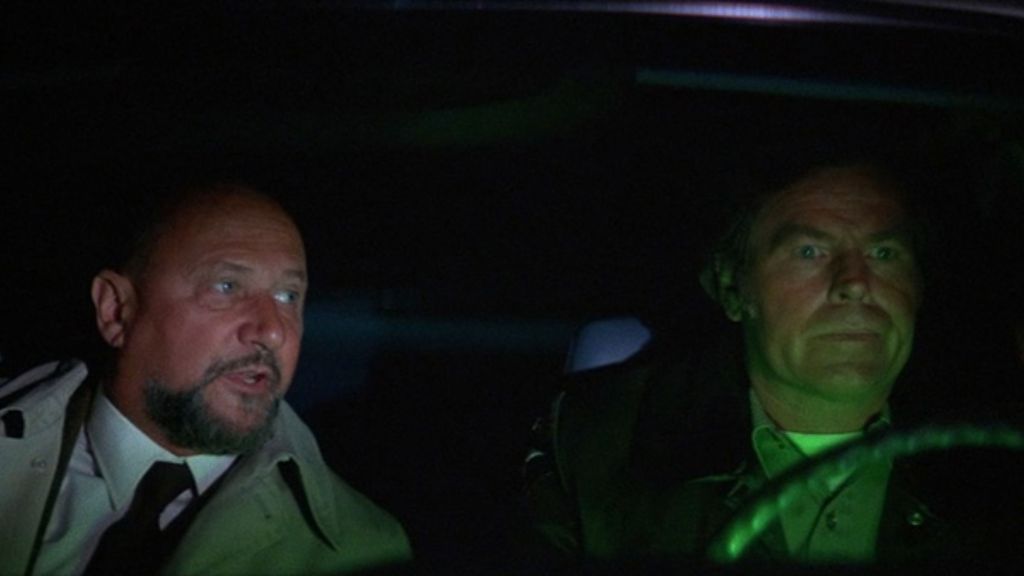
After Halloween, Jamie Lee Curtis starred in a few other horror films, none of which were as popular as Carpenter’s film, but each of which did well enough for themselves. Included in that period between the first and second Michael Myers movies were The Fog, the underrated Prom Night, Terror Train, and the thriller Roadgames. Halloween II was the final entry in her early days horror run unless you count her vocal cameo in Halloween III: Season of the Witch, which I don’t. Her true follow-up film to Halloween II was Trading Places.
But Curtis wasn’t the only one who rejoined the Michael Myers world. It was equally great to have Donald Pleasence back, even if his constant warnings of “This is not a man we’re dealing with!” have already begun to grow a little stale. Then there’s Charles Cyphers, who gets a few great scenes toward the beginning, punctuated by the heartbreaking revelation that his daughter, Annie, was one of the night’s victims.
Then there was the mask, which also made a return from the original movie. Admittedly, it’s a little discolored from being kept by Debra Hill in less than ideally conditioned storage, but it’s the same one. This is just one more factor that really helps Halloween II feel so directly connected to its predecessor. Just look at the goofy masks seen in Halloween 4: The Return of Michael Myers or Halloween 5: The Revenge of Michael Myers, they’re so different the movies don’t feel as connected to the ’78 film as they should (though Return is still a blast).
Ending on a Memorable High Note
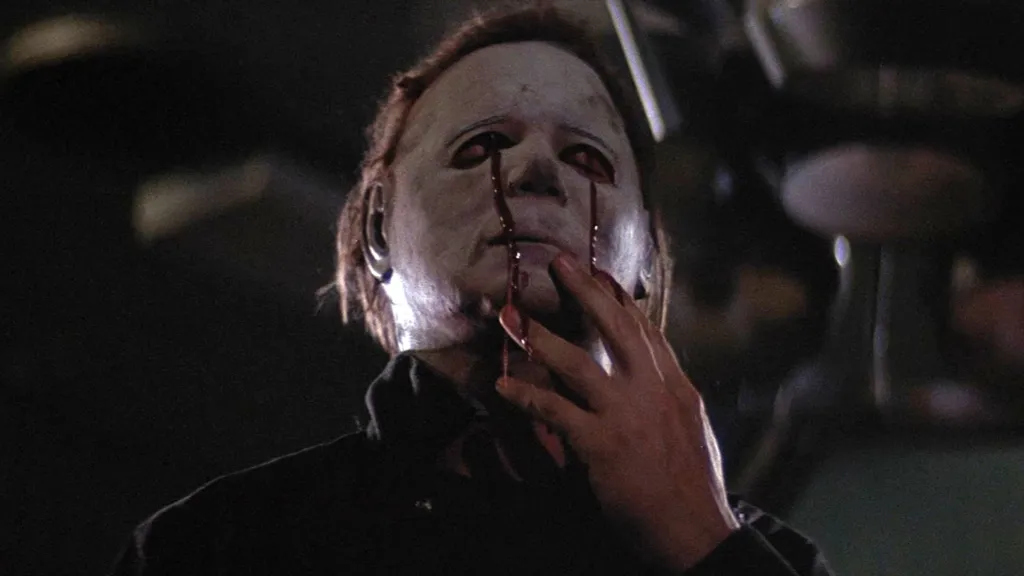
Halloween II‘s finale is iconic for two reasons. For one, there’s what actually happens. Then there’s the inclusion of “Mr. Sandman” by The Chordettes which, like Carpenter’s score, is inextricably linked to this particular franchise. It’s a dreamy song perfectly overlaid on a shot of an ambulance driving through a fog-coated parking lot. It’s perfect.
As for what actually happens, this was when both Michael and Dr. Loomis were supposed to be taken out for good. And, had that happened, there really couldn’t have been a better way to do it. Laurie shooting Michael in the eyes gives her some agency she lacked throughout the movie (mostly because she was so doped up on hospital meds), Michael’s subsequent blind swinging of a scalpel is great imagery as well as a wonderful tension-builder, Dr. Loomis choosing to sacrifice himself to destroy Michael is a true conclusion to his arc, and the shot of Michael walking down the hall on fire before keeling over is just flat-out neat. Some of the Michael Myers movies that followed Rosenthal’s 1981 charmer have been very good or excellent, but this was the way to end Halloween for good.
You can now stream Halloween II (and Halloween III: Season of the Witch) on Peacock. What is your favorite Halloween sequel? Is it Halloween II, Halloween 4, H20, the 2018 reboot, or a different one? Let us know in the comments.



